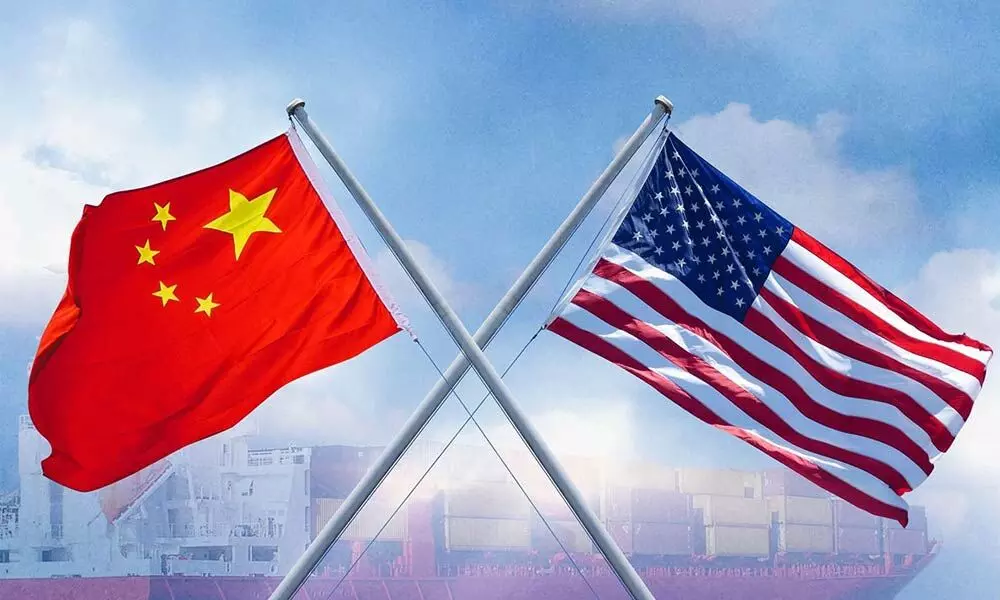Limiting Chinese assertion in SE Asia

Limiting Chinese assertion in SE Asia
The world is again in the midst of a great power competition, a competition that has the potential to cascade into conflict or worse catastrophe
The world is again in the midst of a great power competition, a competition that has the potential to cascade into conflict or worse catastrophe. The territorial disputes are widespread and occur in both the terrestrial and maritime domains. The re-emergence of China as a global power is reshaping associations and alliances with smaller and mid-sized powers feeling squeezed between China and the US.
What is increasingly clear though is China aims to dominate the Southeast Asian politics through its asymmetric economic relations with its neighbours. China is effectively using its economic prowess for meeting its political and territorial goals.
Since its re-emergence as the dominant economy in the region, China has been laying claims on many territories in the through its domestic legislation and invention of historic claims. The effectiveness of domestic legislation by China in terms of securing its claims in South China Sea and East China Sea is however debatable.
Many such claims aren't recognized by international bodies and courts such as the Permanent Court of Arbitration (PCA). The most prominent Chinese claims in South China Sea were ruled as not legal by the PCA in a case drawn upon by Philippines in July 2016. China is using its domestic legislation to expand its exclusive economic zones by creating municipalities at the edge of South China Sea which gives legal foundation for the exclusive economic zones: again, the effectiveness of the method is debatable as it has not been tested.
The parallel here can be drawn to compare the control through domestic legislation between the Chinese claim on South China Sea and Japanese control of Senkaku Islands. Japan has controlled the Senkaku Islands for over a century now and there is a continuity via coast guard and environmental management in that control, mostly and mainly through domestic legislation and international partnership; no such continuity of control with regard to Chinese claim is existent on ground in South China Sea.
The invention of historic claims by China as a tool for foreign policy is even more debatable and problematic. To analyze this one must turn back the pages and search in history any signs of claims of sovereignty by China over the island territories in south China Sea; no such claim can be found.
Bill Hayton, in his book, "Invention of China" writes in detail about how during the Ching (Qing) Dynasty, China showed no interest in the island formation in the south china sea whether be it the islands neighboring Indonesia, Vietnam or Philippines. There is clear evidence in history how Japan and Japanese business interests used the islands for collecting nitrates.
The territorial claims for most nations come after world war II be it Brunei, Indonesia, Vietnam, Philippines, etc. as they developed strong national borders under one government after gaining independence. These countries were colonies prior to World war II and thus to trace their sovereign claims to these territories is difficult.
The UNCLOS treaty signed by 117 states which sets the 200-mile limit for Exclusive Economic Zones gives these countries a claim over the island formations in South China Sea. UNCLOS however is not ratified by the US which gives it a loose footing to enforce any such binding on China.
The ASEAN (Association of South East Asian Nations) can play a significant role in resolving the territorial issues in Southeast Asia, but because it is a loose association of nations and doesn't have the legal capability to challenge and enforce its decisions on China, it has till now not played any decisive role.
In the 2014 ASEAN Summit, a consensus was developed to issue a joint statement with regard to territorial disputes, however Cambodia declined to join the consensus statement after influence from Beijing resulting in no joint statement being adopted. This fracturing of ASEAN unity and division of opinion is mainly achieved through aid and development promises; which again is a smart use of its economic power.
With most of the ASEAN states not claimants in SCS disputes, China has a free hand in manipulating the decision-making capability of ASEAN. The ASEAN members hold mixed views about China, some members perceive China as an economic opportunity and think that China is critical for the development of ASEAN member states, while other see China as a state having dominating and hegemonic interests in the region, thus the relationship of China and ASEAN will always be important but challenging.
The main problem is of the power asymmetry between China and Southeast Asian states. The countries in the region are constantly seeking strategic autonomy to resolve the South China Sea issues peacefully and effectively. The pattern we are seeing at the individual level is to bring in the extra regional powers to the region to enhance the human capital and other capabilities so that they can push back unilaterally against some of the more assertive behavior of China.
Japan has been most active in establishing strategic partnerships, by providing coast guard vessels, maritime domain awareness and human capital building to strengthen individual members and to enhance the ASEAN's integration.
Japan's role is even more important when it comes to Chinese maritime militia (fishermen boat strategy), the militia is trying to instigate the escalations and allowing the China to build an image wherein it is seen as playing a defensive counter. The militia is used to build pressure on the states and in case of Philippines china has already occupied some features in south china sea using this militia forces. The militia move in and out of the sovereign boundaries of other nations and every such movement is a planned part to build on Lawfare strategy e.g. in case of Senkaku islands.
To counter China in South China and East China Sea, US led FONOPs are trying to build a significant naval presence. The US maintains a regular presence for 365 days a year in the region. The effect is of this permanent presence is that China feels increasingly uncomfortable with the US presence. In response, China has adopted to pursuing the strategy of escalating with other US allies.
The naval cooperation and joint exercises in South China Sea and other parts of the Indo-Pacific is threatening to China, especially when French and Canadian navies are also getting involved.
The Quad and Quad-plus like cooperation is the way forward, however this could lead to catastrophe if management maritime system and communication channels are not established. China has to adjust to the presence of the power in the South China Sea and US and allies have to work to keep Chinese assertive behavior at bay while avoiding accidental conflict.
(Dr. Stephen Nagy is a senior Associate Professor at the International Christian University in Tokyo, a fellow at the Canadian Global Affairs Institute (CGAI) and a visiting fellow with the Japan Institute for International Affairs (JIIA). The views expressed are personal)



















